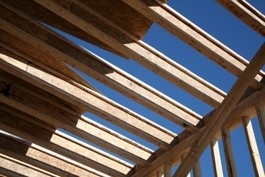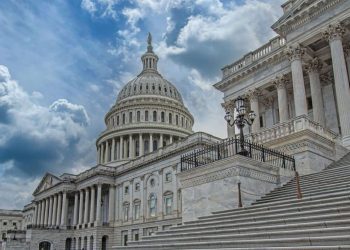 RISMEDIA, March 18, 2010—The pace of single-family home production remained virtually unchanged in February 2010, with a 0.6% decline to a seasonally adjusted annual rate of 499,000 units, according to figures recently released by the U.S. Commerce Department. Meanwhile, a large decline on the more volatile multifamily side brought the overall number of housing starts down 5.9% to a seasonally adjusted annual rate of 575,000 units.
RISMEDIA, March 18, 2010—The pace of single-family home production remained virtually unchanged in February 2010, with a 0.6% decline to a seasonally adjusted annual rate of 499,000 units, according to figures recently released by the U.S. Commerce Department. Meanwhile, a large decline on the more volatile multifamily side brought the overall number of housing starts down 5.9% to a seasonally adjusted annual rate of 575,000 units.
“Today’s single-family numbers are fairly encouraging, in that the level of building activity held firm even as large portions of the country experienced abnormal weather conditions,” noted Bob Jones, chairman of the National Association of Home Builders (NAHB) and a home builder from Bloomfield Hills, Mich.
“This latest data indicates that the single-family sector is gradually finding more stable ground, particularly in light of the poor weather conditions that hampered new building activity in two out of four regions last month and the continued difficulties that builders faced in accessing financing for new projects,” said NAHB Chief Economist David Crowe. “With the deadline for purchasers to take advantage of home buyer tax credits fast approaching at the end of April, improvement in single-family building activity was expected and may have continued into early March. Moreover, the very thin inventory of new homes now on the market, the pent-up demand from three-plus years of low household formations and good affordability conditions will provide the platform for a 25% gain in new-home construction in 2010 over 2009.”
While the combined pace of single- and multifamily housing starts fell 5.9% to 575,000 units in February, that decline was mostly due to a 30.3% dip in multifamily starts to a 76,000-unit pace following a double-digit increase on that side in the previous month. Meanwhile, single-family starts held virtually even, with a 0.6% decline to a 499,000-unit pace.
On a regional basis, combined starts activity declined 9.6% in the Northeast and 15.5% in the South, where unusually poor weather conditions were a factor in February. Meanwhile, starts activity posted gains of 14.3% in the Midwest and 7.9% in the West.
Permit issuance, which can be an indicator of future building activity, declined 1.6% overall to a seasonally adjusted annual rate of 612,000 units in February. This reflected a statistically insignificant 0.2% decline to 503,000 units on the single-family side and a 7.6% decline to 109,000 units on the multifamily side.
Regionally, permit issuance was mixed in February, with the Northeast posting no change, the Midwest posting an 11.7% gain, the South registering a 5.8% decline and the West recording a 2.1% decline.
For more information, visit www.nahb.org.










